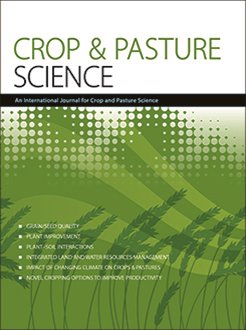Context. Red leather leaf (RLL), caused by Neospermospora avenae, is a common foliar disease of oats in south-eastern Australia but its impact on hay and grain yield and quality is unknown.
Aim. We aimed to determine the effect of RLL on grain yield and quality of commercial milling oat varieties, and biomass and nutrition of hay oat varieties, with a range of host plant resistance responses by comparing fungicide and disease treatments.
Methods. A total of eight field experiments were conducted in 2019 and 2020; four experiments each investigated the effects of RLL on hay or milling oats. In each experiment, six or seven oat varieties were sown with a disease or fungicide imposed. RLL severity was estimated visually for each experiment. Biomass yield and quality traits at early milk development stage were measured for hay oat experiments; and grain yield and quality for the milling oat experiments.
Key results. RLL severity (% leaf area affected: 0–44% in hay oats and 2–61% in milling oats) varied with the season, varietal resistance, and treatments. RLL caused significant losses in most experiments, with reductions in biomass of up to 3.5 t/ha (22%) in hay oats and grain yield of up to 1.1 t/ha (21%) in milling oats.
Conclusions. RLL can be a severe foliar disease of oats in south-eastern Australia and cause significant losses in both hay and milling oat crops.
Implications. Growing varieties with resistance can effectively reduce potential loss due to RLL and growers are required to adapt fungicide strategies reflecting seasonal conditions and product type (grain or hay).






